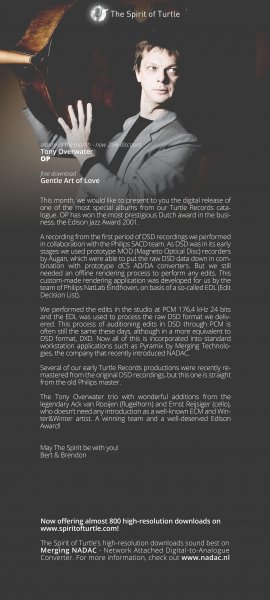Before I started buying my first Challenge Classics dxd and dsd 256 recordings I asked Bert van der Wolf which of his many classical recordings he particularly liked from a sound perspective. Although maybe a somewhat impertinent question to a recording engineer/producer who is undoubtly (very) proud of all his recordings Bert was kind enough to mention a few of his favourites. One of his favourite recordings is volume 1 of the piano concertos of Beethoven with the Dutchman Hannes Minnaar on piano and Jan Willem de Vriend conducting the Netherlands Symphony Orchestra. Needless to say that I bought this recording and I immediately understood why Bert had recommended it to me.
This recording was very recently reviewed by Adrian Quanjer on
www.hraudio.net
For those who are interested I quote Adrian's review:
"There isn’t any shortage of Beethoven piano concerti on disk; even in Super Audio there are 21 ‘Emperors’ to choose from. Many have collected high scores, though performers approach them often from quite different angles. Some tend to forget that the most important part is the composer’s. It’s, of course, hardly possible to improve on that. Much easier is it to spoil things by trying to stand out of the crowd with quirky mannerisms or excessive tempi (either way). Best is to play Beethoven as it’s indicated in the score. That’s precisely what Hannes Minnaar is doing. Middle of the road? In my view his’ ís the road.
For those less familiar with his name: Minnaar is an up and coming pianist from Holland, 3rd laureate at the 2010 ‘Concours Reine Elisabeth’, Brussels, and gaining in prominence in Europe & beyond ever since. His style may perhaps best be characterized as sensitively romantic, musically inventive, with much tonal beauty and fluent precision. It’s illustrative that for the finals he chose to play Saint-Saëns’ mysterious and exotic fifth piano concerto, rather than such war horses as Rachmaninov or Tchaikovsky. Then what are his credentials when it comes to Beethoven? Hannes Minnaar studied at the Conservatory of Amsterdam. He was a pupil of Jan Wijn, who directed him towards traditional repertoire. Aged 17, he already played Beethoven’s fifth piano concerto with the Symphony Orchestra of the Amsterdam Conservatory under the baton of Frans Brüggen.
What makes this recording furthermore so special, is the stimulating input of Jan Willem de Vriend and his Netherlands Symphony Orchestra. De Vriend comes from the HIP scene (Combattimento Consort Amsterdam). When he became Chief Conductor he remodeled this orchestra into a hybrid band, replacing the brass with period instruments and using sticks for the tympani, thus creating its own, typical sound for 18th and 19th century repertoire.
Taking the individual characteristics of Soloist, Orchestra and ‘Chef’ together we have all the ingredients for playing Beethoven as it should be, nothing more, nothing less, with 19th century orchestral sound and a piano tailored to perfection. A glowing example of how to shape in unison a memorable musical experience; participating as equals in creating a monumental edifice called ‘Ludwig van Beethoven’.
Power play doesn’t seem to be Minnaar’s trade; his ‘power’ comes from well-chosen accentuation and subtle shifting from piano to forte; here adequately supported and, where needed, intensified by de Vriend. His orchestra’s contribution should not be under estimated and the beginning of both concerti gives them ample opportunity to show their cards: Marvelously precise strings and joyful shining brass.
Both Minnaar and de Vriend resist the temptation to exaggerate the dramatic converse between piano and orchestra in the second movement of the fourth, whereas Minnaar shows his sensitive and exquisite pianism in the second movement of the fifth, beautifully shaped and stylishly accompanied by de Vriend. It sounds as though the notes stream unhindered from the brain through the arms to the keyboard.
The final movement of the Emperor is simply glorious, complete with roaring brass and rattling tympani, be it that I do realize that not everyone may be as thrilled as I.
There is one thing which strikes as odd: The cadenza in the first movement of the 4th piano concerto. It’s not the usual one and the booklet doesn’t say whose it is. I suspect Minnaar is the inventor.
The recording is up to the very high standard of Bert van der Wolf’s NorthStar Recording Services. You won’t miss a thing, including the dying out of soundboard of the grand at the end of the outer movements in both concerti.
This first Volume of the projected complete set is now my favourite for no’s 4 and 5, and I’m looking forward with great anticipation to the next.
Blangy-le-Château
Normandy, France"
Volume 2 of the Beethoven pianoconcertos nos. 1 & 2 with Minnaar and De Vriend will probably be released next month.


